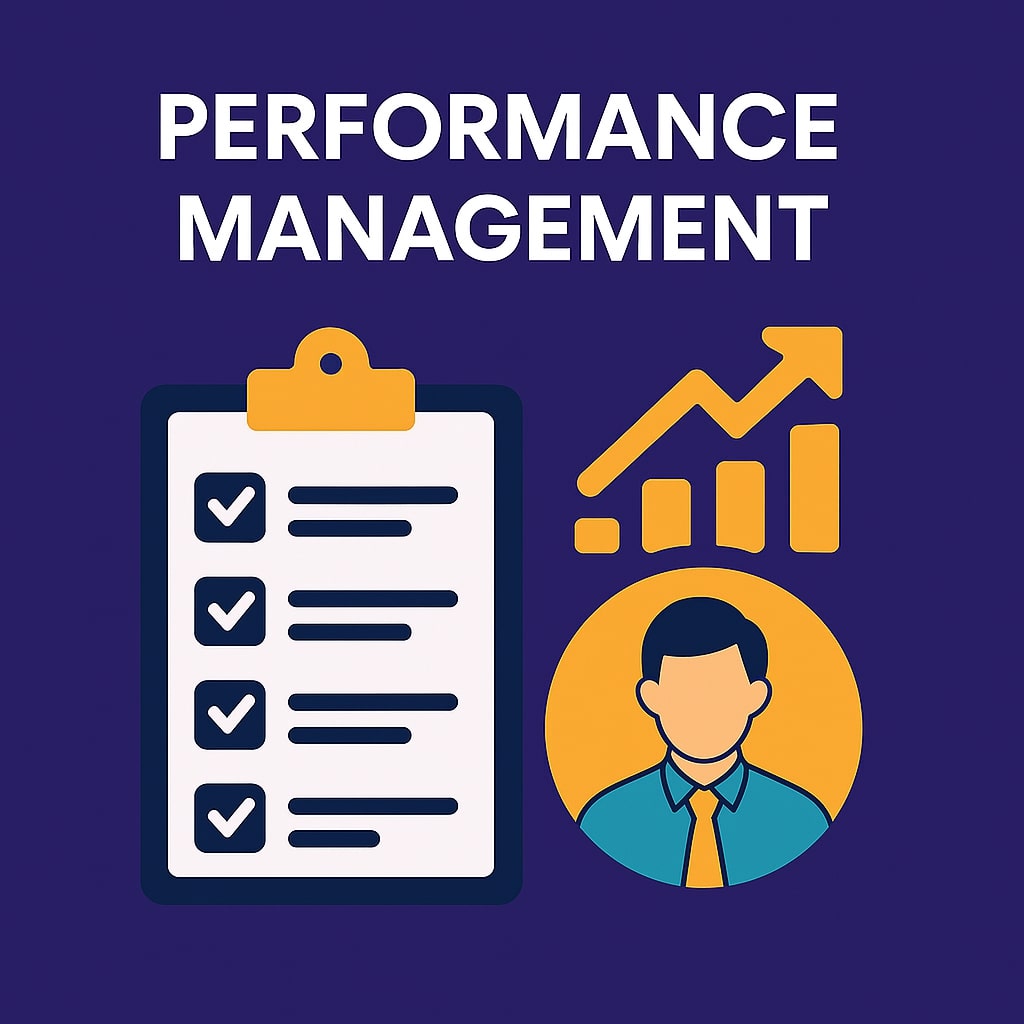What is a Performance Management Strategy?
A performance management strategy is a structured plan to evaluate and improve employee performance while aligning it with company objectives. Instead of relying on outdated annual reviews, this strategy emphasizes clear goals, continuous feedback, and skill development. For startups, where every team member plays a significant role, having such a strategy ensures that everyone is working effectively toward the same goals.
Performance management is one of HR practices startups can implement in order to keep their employees efficient. Implementing this practice early, as your company begins to grow, ensures smoother operations and stronger team alignment in the future.
How to Build a Performance Management Strategy for Your Startup
When you’re running a startup, it’s easy to get caught up in the day-to-day hustle of launching products and gaining traction. But if you want your team to stay productive, motivated, and aligned with your goals in the long term, not just for the next sprint or two, you need a solid performance management strategy. It’s not just about tracking tasks or conducting annual reviews—it’s about making sure your team knows what’s expected of them, gets regular feedback, and has the tools to grow alongside your company.
Why is Performance Management Important for Startups?
Startups operate in a fast-paced, resource-constrained environment. Without a clear performance management strategy, employees can lose direction, become disengaged, or fail to deliver on key objectives. A well-implemented plan ensures:
- Clarity: Employees understand their roles and responsibilities.
- Focus: Team efforts are aligned with business goals.
- Engagement: Employees feel valued and motivated to contribute.
- Early Problem-Solving: Issues are addressed before they escalate.
When your team is aligned and supported, you can achieve results faster and build a strong foundation for scaling your business.
Steps to Develop a Performance Management Strategy
Creating a performance management strategy doesn’t have to be overwhelming. Follow these steps to build an effective plan:
- Define Company Goals: Identify what you want to achieve as a business, both short- and long-term. These objectives will guide your strategy.
- Understand Key Roles: Clarify the responsibilities and expectations for each role to ensure everyone knows how they contribute.
- Set Clear Metrics for Success: Develop measurable KPIs (Key Performance Indicators) that align with your goals. For example, track sales growth, project delivery times, or customer satisfaction.
- Establish Feedback Processes: Create a framework for regular check-ins, whether weekly, monthly, or quarterly. This ensures employees get timely feedback.
- Use Tools for Tracking: Implement tools like Humadroid to manage employee goals, document progress, and track feedback in one place.
- Train Managers: Equip managers with the skills to provide constructive feedback, guide employees, and foster collaboration.
- Regularly Review Your Strategy: Evaluate the effectiveness of your plan and make adjustments based on employee feedback and business needs.
Examples of Performance Management Strategies to Implement
Here are a few practical strategies that your startup can adopt:
- 360-Degree Feedback: Gather input from peers, managers, and direct reports to get a comprehensive view of employee performance.
- OKRs (Objectives and Key Results): Break down company-wide goals into smaller, actionable objectives for teams and individuals. For example, if your company aims to expand into new markets, set OKRs for customer acquisition in those areas.
- Continuous Feedback Model: Replace annual reviews with frequent one-on-one meetings to address challenges and celebrate wins in real-time.
- Skill Development Plans: Invest in tailored growth plans for employees, such as technical training or leadership coaching, to help them thrive in their roles.
- Recognition Programs: Implement a system for recognizing achievements, whether through team shoutouts, bonuses, or additional time off.
- Flexible Goal-Setting: Allow goals to evolve as the company grows, ensuring they remain relevant and achievable.
These strategies not only keep employees engaged but also ensure their work aligns with the company’s evolving needs.
Integrating Performance Management Into Your HR Strategy
Performance management doesn’t exist in isolation. It ties directly into other HR practices, such as recruitment, onboarding, and employee engagement. A strong performance management strategy complements these processes, ensuring your team is motivated and prepared to tackle the challenges of a growing business.
Wrapping It Up
Building a performance management strategy isn’t just about tracking work—it’s about creating a culture where employees feel supported, know their contributions matter, and are motivated to grow. Start with clear goals, establish regular feedback, and invest in tools like Humadroid to keep everything on track. Adjust your strategy as your company grows, and you’ll create a workplace where both your team and your business can thrive.

